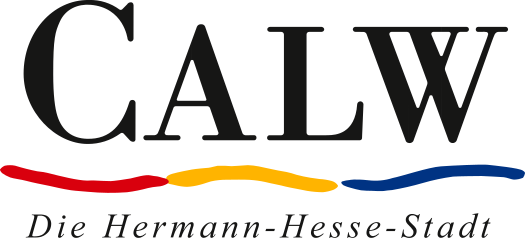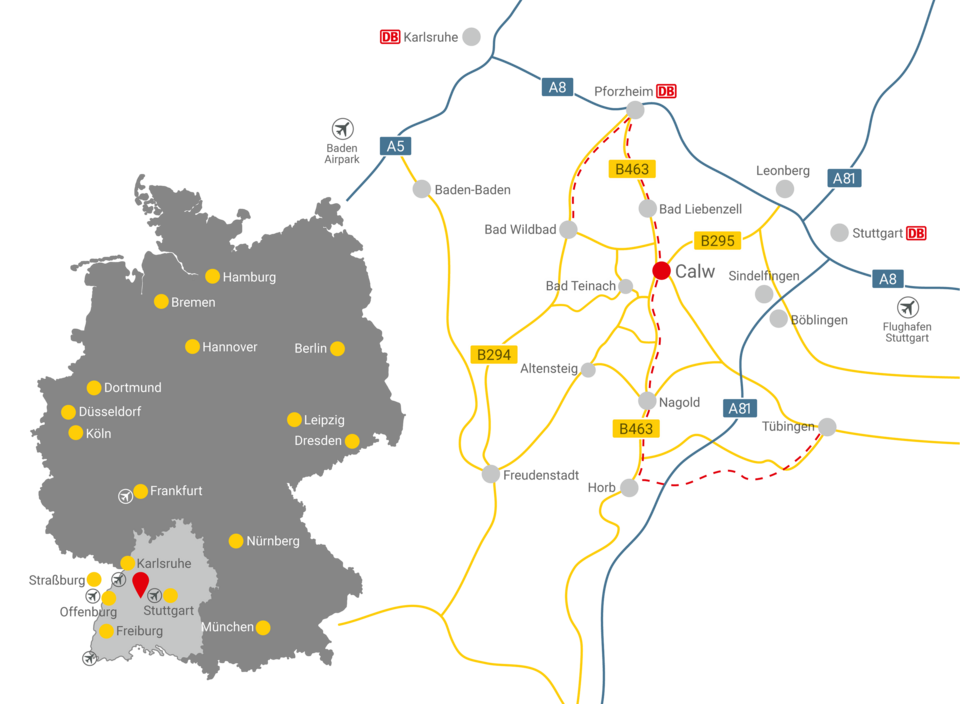Between Bremen and Naples, between Vienna and Singapore, I have seen many a pretty city […]. But the most beautiful town of all that I know is Calw an der Nagold, a small, old, Swabian Black Forest town. – Hermann Hesse
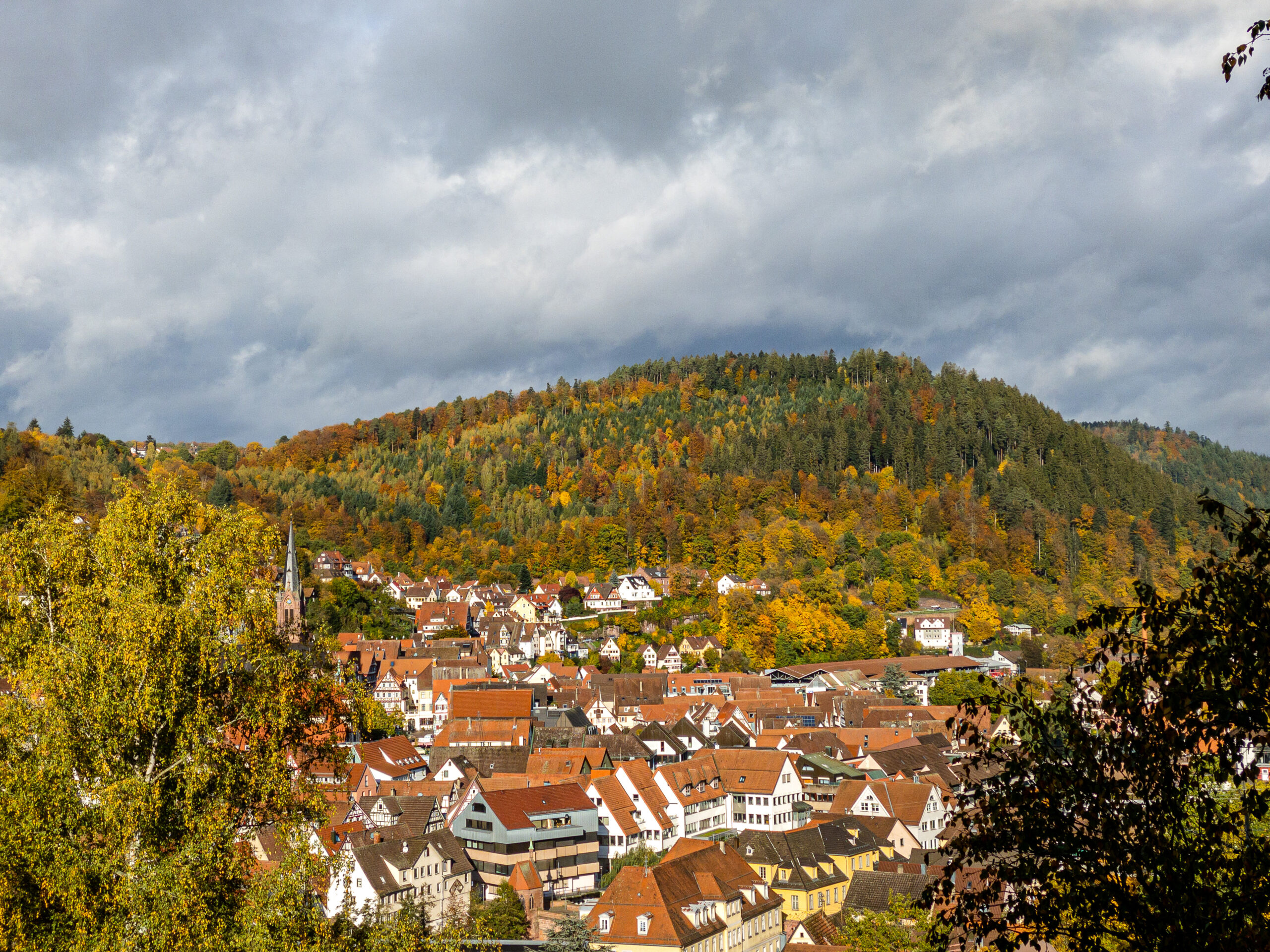
Calw between Black Forest and Gäu
This charming little town is rich in cultural history and delights its guests with the “black forest”, which runs directly from the town garden up towards the mountains. From a dazzling history and former wealth has remained a picturesque half-timbered town with hundreds of listed houses, which inspires visitors to this day.
The historic town and its surrounding villages are home to warm-hearted, fun-loving Calw residents who enjoy life in and around their home and make the region vibrant.
Especially for families with children, the city has something to offer in many respects. In addition to a wide range of educational opportunities, Calw residents appreciate the many possibilities in the areas of music, sports, recreation and culture.
| Population: | 25,707 (as of 01.08.2021) | |
| District area: | 5,988 hectares | |
| Elevation: | 320 to 683 meters a.s.l. M. | |
| County: | Calw, license plate number: CW | |
| Region: | Northern Black Forest | |
| Government District: | Karlsruhe | |
| Twin cities: | Weida, Thuringia (D) Laces, South Tyrol (I) Collina d’Oro, Ticino (CH) Cluny, Burgundy (F) (monastic partnership) |
Large district town Calw
Calw [pronounced: kalf, Swabian: kalp] is a medium-sized town in Baden-Württemberg, located about 18 kilometers south of Pforzheim and 33 kilometers west of Stuttgart. The county seat, also the largest city in the district of Calw, forms a middle center for the surrounding communities. Calw has been a large district town since January 1, 1976. It belongs to the Northern Black Forest region and to the peripheral zone of the European metropolitan region of Stuttgart.
The urban area of Calw is divided into the 13 districts: Altburg, Oberriedt, Speßhardt, Spindlershof, Weltenschwann, Calw, Alzenberg, Heumaden, Wimberg, Hirsau, Ernstmühl, Holzbronn and Stammheim.

Family friendly city
Families enjoy living here: crèches, kindergartens and schools are well equipped and are practically “around the corner”. Life in Calw is made even more enjoyable by the wide range of cultural and sporting leisure activities on offer. Whether music school, numerous clubs, city libraries, offers for young people or municipal museums…there are big and small what they like.
Our declared goal is to be able to offer all children in Calw very good starting opportunities. In recent years, the city of Calw has done a considerable amount for parents and children in a wide variety of areas. In particular, the enormous investments in the expansion of the toddler and kindergarten area contribute to the fact that families with children can feel well looked after in Calw.
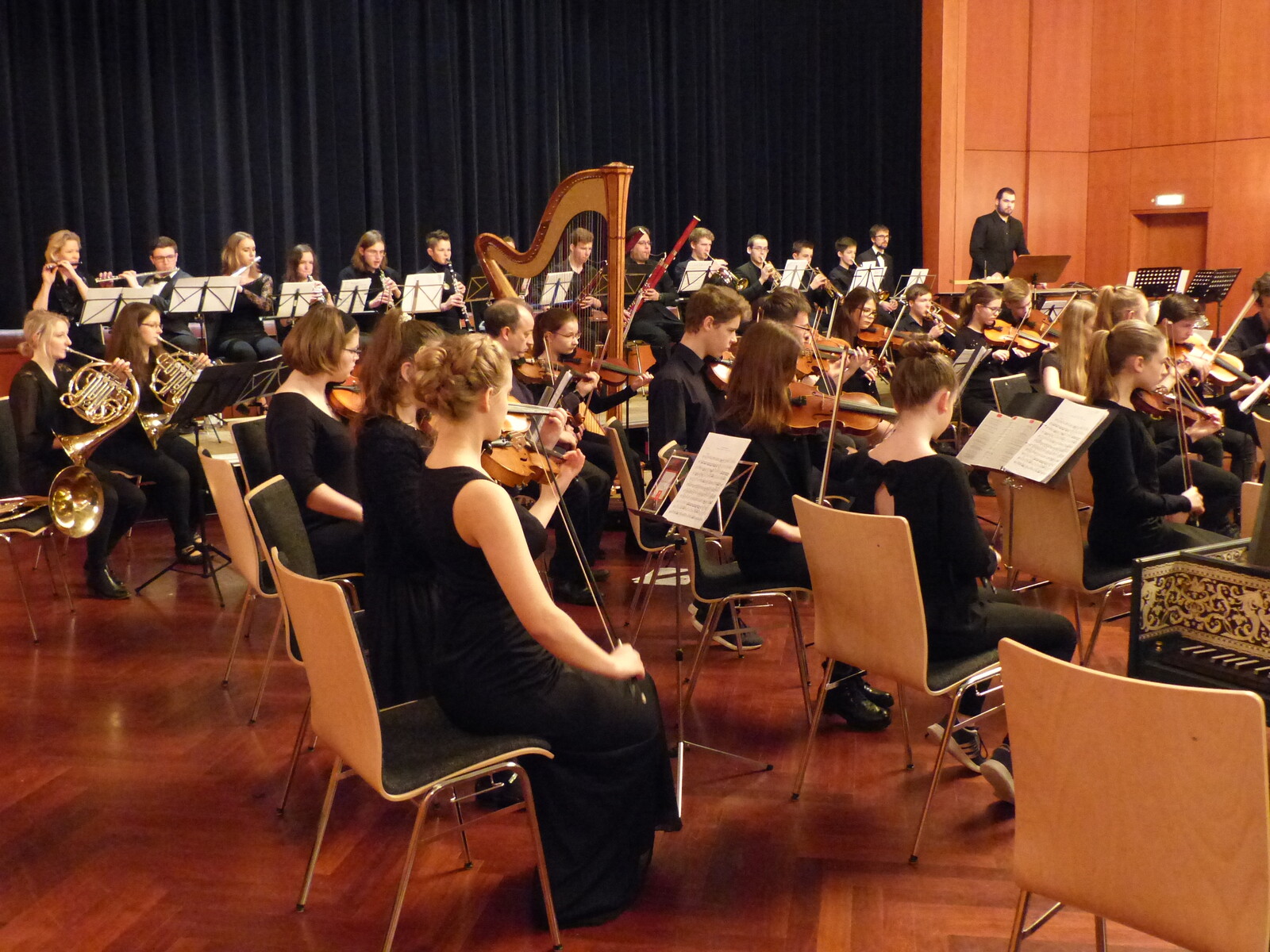
City of Culture
Calw is a lively city of culture. It lives from the diversity and a very high artistic quality. The Aurelius Boys’ Choir is undoubtedly the pinnacle of Calw’s high culture and carries the city’s name out into the world. Numerous artists who have lived and worked in Calw, the music school and other institutions help to ensure that the soul is not neglected in Calw.
With its nearly 70 teachers, the Calw Music School cares for and motivates over 2000 students in Calw and the surrounding area. Countless offers are provided for young and old. The 3-pillar house offers a high-class, musical education for all music enthusiasts. The music school teachers support students individually according to their needs, if desired, all the way to music studies.
The Hermann Hesse City
It is thanks to the poet and Nobel Prize winner Hermann Hesse (1877 – 1962), who was born in Calw, that the charm and beauty of the Black Forest town have entered literature and achieved world fame.
Anyone who walks through the alleys of Calw today in the footsteps of the “Steppenwolf” – whether as a local or a tourist – will find much still as the young Hesse saw it and internalized it. If he could return to today’s Calw, he would discover a modern city almost five times as large, in which many things have changed.
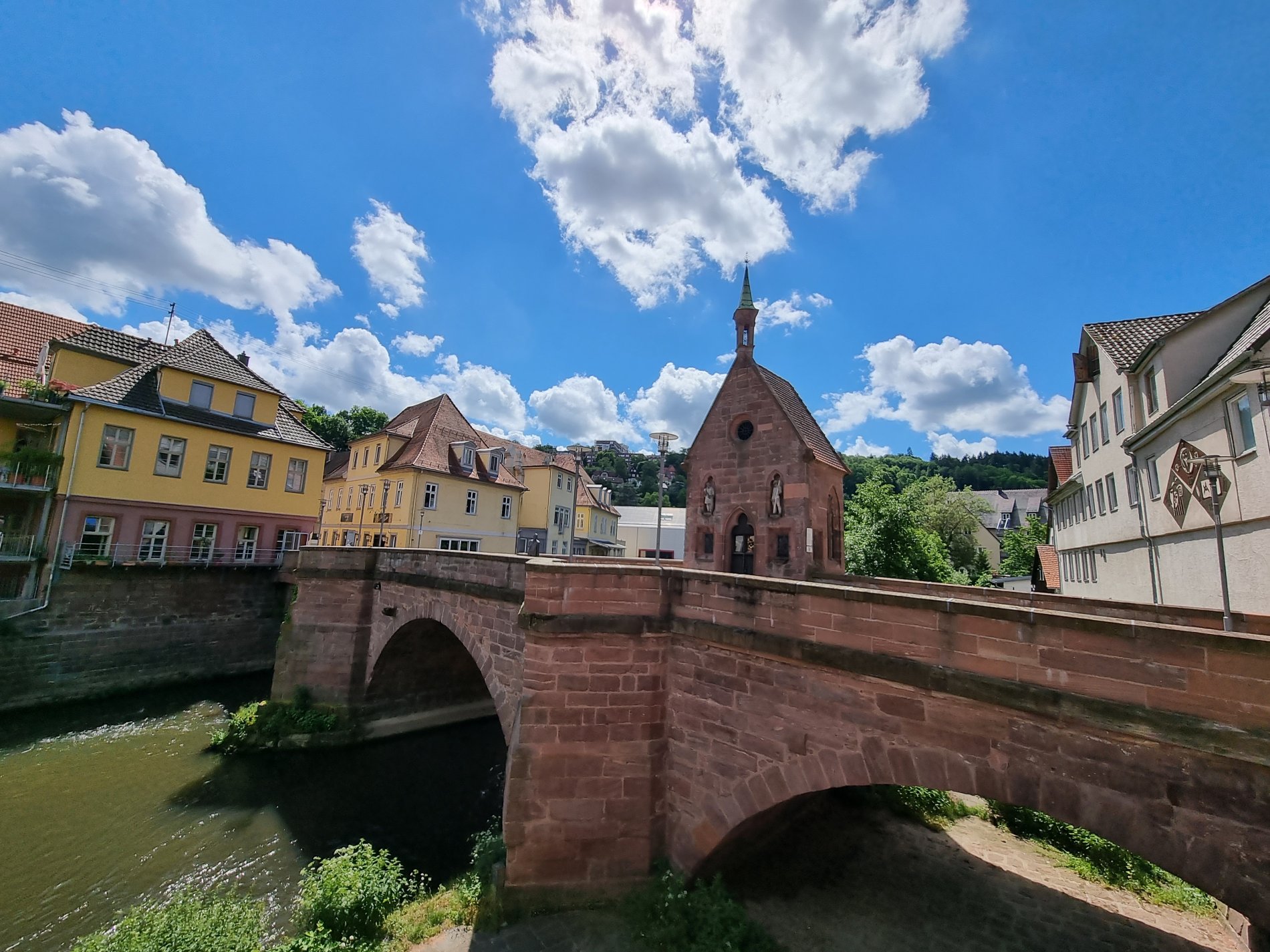
Half-timbering on the river
The history of the town, first mentioned in 1075, is marked by its location on the river. Influenced by the Protestant work ethic, the people of Calw engaged in wood and salt trading as well as textile production for centuries. In the 17th century, the city even rose to become the most important economic center in Württemberg.
What remains is a picturesque half-timbered town with over 200 listed houses, reflecting the former wealth of its citizens and providing a fantastic backdrop for one of the most beautiful and lively pedestrian zones in southern Germany.
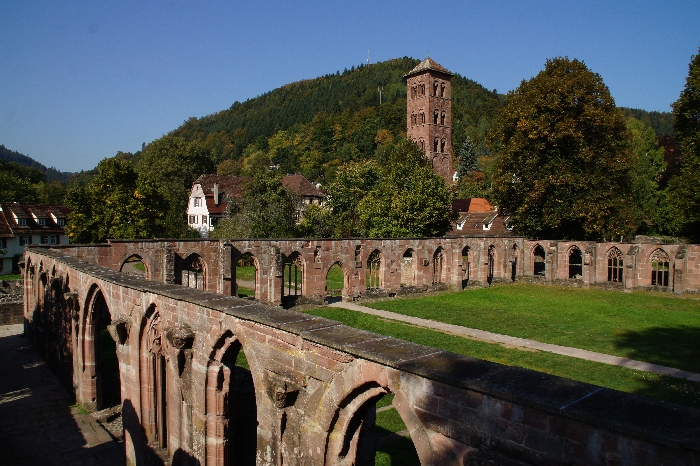
Hirsau Monastery
A great number of thinkers, scholars and artists emerged from the midst of the Calvars. After all, little Calw has always liked to turn the big wheel. In the High Middle Ages it once even wrote German history.
It was the Counts of Calw who donated the Hirsau monastery – as a ruin today, along with the Hesse memorials, the tourist attraction of Calw, and also known for the “Klostersommer Hirsau” (Hirsau Monastery Summer). Under the brilliant and highly learned Abbot Wilhelm, the Benedictine abbey rose to become one of the largest and most influential monasteries in Germany in the 11th century and played a major role in the famous investiture dispute between the pope and the emperor.
Altburg
The village of Altburg (2,675 inhabitants) is located on the very west side of the Black Forest and is a village with a tangible rural tradition, integrated into the landscape of the plateau between Nagold and Enz with its scattered orchards. Visible from afar, the fortified tower of St. Martin’s Church dominates the silhouette of the village. It dates back to the 12th century and is the oldest part of the beautiful church, which together with the rectory (built in 1784/85) and the cemetery form a beautiful ensemble. The village of Altburg includes the districts of Oberriedt and Spindlershof to the east and Weltenschwann and Speßhardt to the southwest. Speßhardt, which is known among Black Forest tourists for its idyllic location in the wide meadow valley of the Rötelbach stream, is the most touristy. History: Altburg was named Altbura in 830 and was first mentioned in a document of Emperor Heinrich IV in 1075 as “Altpuren” (to the old houses). After the Counts of Calw and of Vaihingen, Altburg came to the Counts of Württemberg in 1339. From the castle, which was already a ruin in 1522, only the moat is preserved today. The former castle has been demolished. In 1795, parish vicar Bohnenberger began the great work of the famous “Charte von Schwaben” by determining the geographical location of Altburg.
Alzenberg
The district Alzenberg (1007 inhabitants) was already incorporated into Calw in 1935. It is located on the heights northwest of the core city. In earlier centuries, Alzenberg, together with the hamlets of Speßhardt and Oberriedt, formed an overall community, which only received the name Alzenberg in 1908. Before that Speßhardt was the main village, which belonged to the Duchy of Württemberg early on.
In 1933, the hamlets of Oberriedt and Speßhardt were transferred to the neighboring Altburg (today a suburb of the city of Calw). This was followed by the aforementioned incorporation of Alzenberg into Calw.
In a description of 1841 it said about Alzenberg: “The while lies in a high and wild area”. In the 1970’s, considerations were made to swell the district to 5000 inhabitants through the massive construction of housing estates and a specially subsidized infrastructure.
However, these plans were not carried out, so that today the “oldest” suburb of the city presents itself as a quiet, historically influenced, but also modern island in the urban area.
Hirsau
The village of Hirsau (population 2,197) with its district Ernstmühl is located downstream only about three kilometers from Calw at one of the most charming spots in the Nagold Valley. The history of Hirsau begins around 760 with the construction of the Nazarius Church, in 830 the Aurelius Monastery is founded, but it falls into disrepair and from 1059 it is rebuilt on a larger scale elsewhere. The universally learned Abbot Wilhelm made Hirsau Monastery one of the most influential monasteries in all of Europe. After the monastery property went to the Duchy of Württemberg in the 16th century, Duke Ludwig von Württemberg had a hunting and pleasure palace built within the monastery walls. In 1692 Mélac destroyed the monastery and castle. The political municipality of Hirsau was first established in 1830 and became part of Calw in 1975 as part of the municipal reform. However, the double name Calw-Hirsau was abolished after only one year. As a climatic health resort with its healthy stimulating climate, Hirsau has a local recreational function for stressed city dwellers from the Stuttgart conurbation. In addition, the fantastic backdrop of the monastery ruins attracts thousands of visitors year after year to the Calw Monastery Summer. In addition to the 800-year-old Aurelius Church, the ruins of the monastery of St. Peter and Paul (1082 – 1091) with its Romanesque owl tower, the Gothic cloister (1482 – 1485) and the late Gothic Lady Chapel (1508 – 1516), which has been preserved intact, are of great architectural interest. Also noteworthy are the ruins of the Renaissance hunting lodge (1588 -1592), within whose walls stood the elm tree of Hirsau, sung about by Ludwig Uhland. In March 1989, the 250-year-old tree, whose crown replaced the missing roof, had to be cut down because of a disease.
Heumaden
Construction of the Heumaden district did not begin until 1959/60, after Calw had become a Bundeswehr base in 1957 (in 1962, the Graf Zeppelin barracks were inaugurated, which are now home to the KSK special military unit). Today, Heumaden is Calw’s largest district with a population of 5,089. The name comes from the former field name “Große Heumaden”, because before the development the plateau was only used for agriculture. The district is characterized by the apartment blocks of the 60s and 70s. However, in recent years, due to strong demand, several residential development sites have been added, contributing to the growth of the district.
Holzbronn
Framed by orchard meadows, Holzbronn lies on a plateau of the Heckengau in the south of the city. The smallest district (750 inhabitants) has carefully preserved its village character and even in recent times has only cautiously expanded into the open countryside. Holzbronn was founded around 1150 by the Counts of Calw as a feudal settlement called “Holtzspronn”. In 1345 the village came to Württemberg, in 1792 Holzbronn became an independent municipality. The townscape is dominated by St. Bernard’s Church: with its idiosyncratic pagoda-like tower, it was built in 1907/08 in the Art Nouveau style. Inside, it still partly contains paintings donated by parishioners after the new construction in the 18th century.
Stammheim
Stammheim (population 4,786) is located at the junction between the Black Forest and the Gäu. The history of Stammheim, as probably one of the oldest villages in the district of Calw, begins about five centuries before the birth of Christ with a Celtic settlement. The Romans have also left their traces: in 1911 a Villa Rustica was excavated. In 1973 an Alemannic cemetery was found. Around 830 the place is mentioned in documents for the first time. At 14. and In the 15th century, the Hirsau monastery gradually acquires the village, which after the Reformation comes to Württemberg. Together with the old rectory and the cemetery, St. Martin’s Church forms the center of the village. Above the squat square of the tower sits the octagon of the bell floor. The tower dates back to the 11th century and was built in the 14th century increased. In 1790 the nave was demolished, then rebuilt and extended. The choir room with its vault from the 14th century and the frescoes on the walls are worth a visit. Opposite the church stands one of the most beautiful half-timbered houses in the whole town: the so-called “Fischerhaus” was built in 1464 and rebuilt in 1739. The building was spared during the great fire on April 20, 1945.
Wimberg
The district of Wimberg (population 2,177) on the western side of the valley was an independent hamlet belonging to Württemberg centuries ago. Gradually, the town bought up the farms in the 16th century. It was not until 1949 that Calw began to settle the Wimberg (formerly Wynnperg or Windberg). Numerous homeless refugees from Eastern and Southeastern Europe found a new home here. In recent years, the district has continued to grow with new residential development. Alzenberg (population 1,007) was formerly an independent hamlet with stately farms and became part of Calw in 1935.
